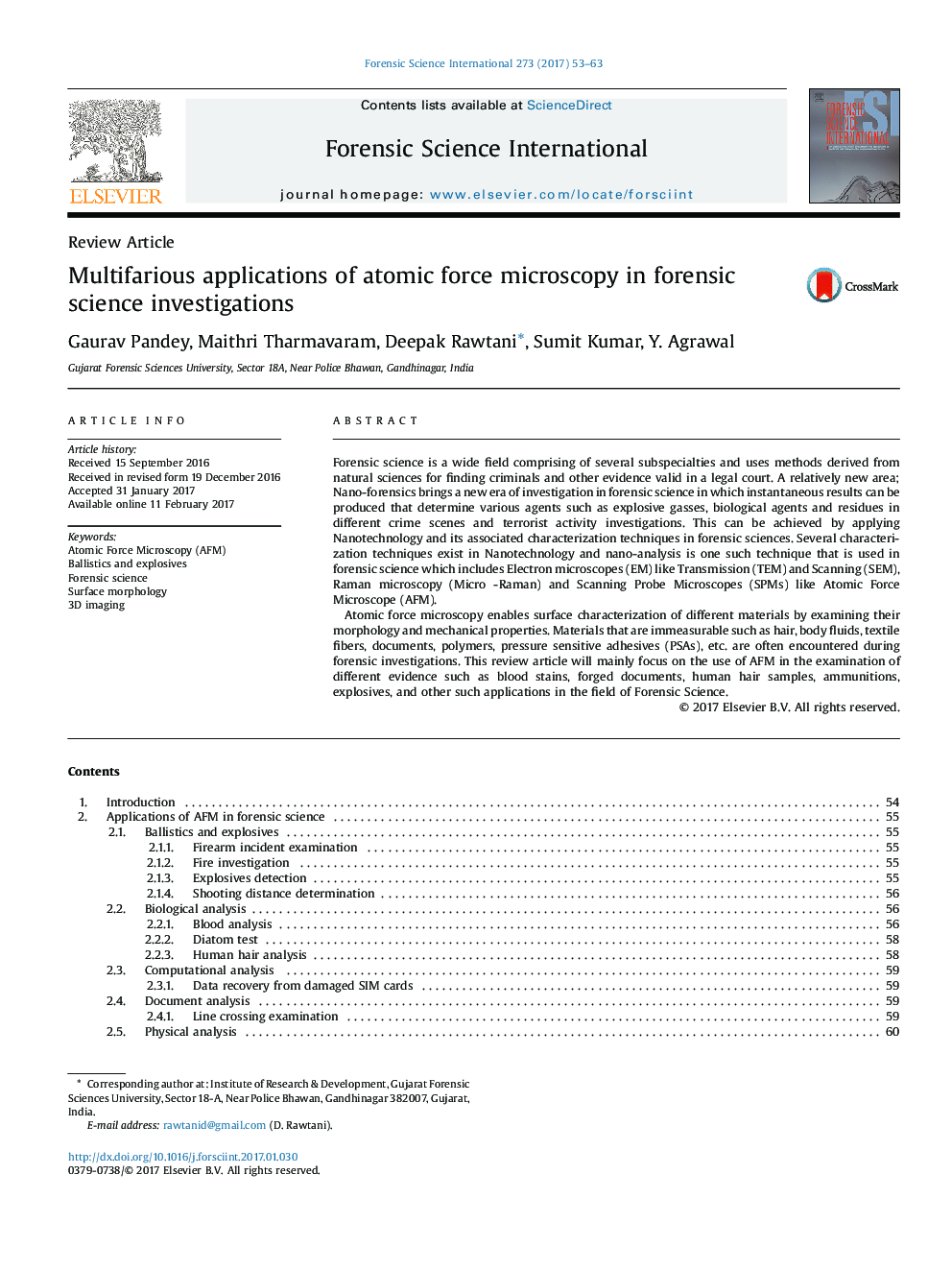| Article ID | Journal | Published Year | Pages | File Type |
|---|---|---|---|---|
| 4760324 | Forensic Science International | 2017 | 11 Pages |
â¢AFM- a Nanotechnology tool to study any material's surface morphology.â¢Advantageous in different divisions of forensic science.â¢Used in Ballistics-explosives, biological and physical analysis of evidence.â¢Also, beneficial in computational and document analysis.
Forensic science is a wide field comprising of several subspecialties and uses methods derived from natural sciences for finding criminals and other evidence valid in a legal court. A relatively new area; Nano-forensics brings a new era of investigation in forensic science in which instantaneous results can be produced that determine various agents such as explosive gasses, biological agents and residues in different crime scenes and terrorist activity investigations. This can be achieved by applying Nanotechnology and its associated characterization techniques in forensic sciences. Several characterization techniques exist in Nanotechnology and nano-analysis is one such technique that is used in forensic science which includes Electron microscopes (EM) like Transmission (TEM) and Scanning (SEM), Raman microscopy (Micro -Raman) and Scanning Probe Microscopes (SPMs) like Atomic Force Microscope (AFM).Atomic force microscopy enables surface characterization of different materials by examining their morphology and mechanical properties. Materials that are immeasurable such as hair, body fluids, textile fibers, documents, polymers, pressure sensitive adhesives (PSAs), etc. are often encountered during forensic investigations. This review article will mainly focus on the use of AFM in the examination of different evidence such as blood stains, forged documents, human hair samples, ammunitions, explosives, and other such applications in the field of Forensic Science.
Graphical abstractDownload high-res image (123KB)Download full-size image
